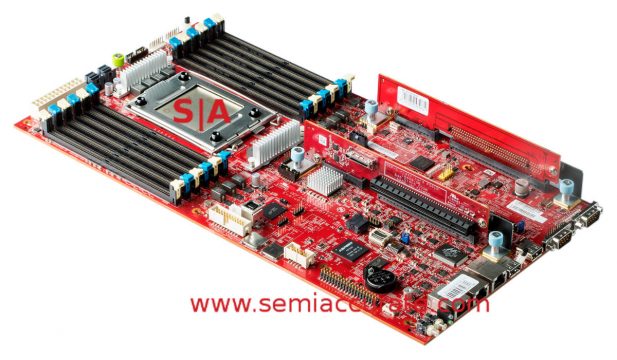![]() Intel investors should be very scared at the moment, Qualcomm just announced Microsoft as an ARM server customer. As SemiAccurate has been saying all along, the customers for ARM servers are real and large, the volume is going to stun you when it is public.
Intel investors should be very scared at the moment, Qualcomm just announced Microsoft as an ARM server customer. As SemiAccurate has been saying all along, the customers for ARM servers are real and large, the volume is going to stun you when it is public.
Up until today Intel was proactively, and intentionally deceptively downplaying the marketshare of ARM servers. If you look at the numbers that come from the major analyst houses, without disclosure of who funded them, Intel is at nearly 100% marketshare for servers. If you look at who is actually deploying what, there is no way that is true unless the questions were framed very curiously.
Between the analysts purposefully narrow definitions and Intel pulling stunts like re-defining a socket loss to ARM as an appliance rather than a server, their marketshare is at an all time high. Behind the scene there is borderline panic from what SemiAccurate moles are saying, things like this are not signs of a confident company. For the moment just believe that Intel is in a far worse position than it looks from the public vantage point.
Back to today, what was announced other than the first real high volume ARM server win? Qualcomm’s Centriq 2400 CPU was previously announced but there are a few new details, mostly in the OCP reference design co-revealed with Microsoft. First is the confirmation of 6 DDR4-2667 DIMMs channels with two DIMMS per channel which likely puts Qualcomm ahead of Intel on memory per socket until Purley. Shades of AMD’s Naples here but Intel will catch up with Centriq but not with Naples.
On the connectivity side things are a bit murky. Mellanox and Xilinx were Qualcomm server partners from day one and sure enough Mellanox is right there in the first public design with a ConnectX4 controller. Each OCP board has 50Gbps of bandwidth so with two boards per RU, that would be a nice, single cable to each enclosure. The ConnectX4 routes 50Gbps to each side and all is well. There doesn’t appear to be a Mellanox chip on the board itself which leads us to think the engineers did it right and effectively disaggregated the uplink from the system to the chassis.
Back to the chip itself there are 32 lanes of PCIe3, 2 USB, 8 SATA ports, and a single GbE for management. This last one is probably a result of the Aspeed management chip on board, an AST2520 if you care. Overall the design looks pretty solid and well thought out, about what you would expect for a modern OCP design from two high-end partners.

Qualcomm/Microsoft OCP board
There are actually three reference designs for Microsoft’s Project Olympus chassis. One is two of the OCP boards side by side in a single 19 inch RU, the other two have one board each. One of the boards has eight 3.5″ HDDs on the other side, the second layout has a GPU or FPGA taking the unpopulated half. Their count is probably dictated by power density rather than physical space. For the pedantic out there Qualcomm also lists a NVMe configuration but that is effectively the same as the HDD kit just faster and more expensive.
On the software front Microsoft is running an internal build of Windows for ARM, something SemiAccurate told you about exclusively over two years ago. Any guesses as to what Microsoft was preparing for back then? In any case it is quite real and out in the open now, Microsoft is going to buy lots of ARM servers this year. For what? As with the AMD Naples announcement, Qualcomm lists big data and memory bound applications, think Hadoop and related workloads. This also explains the HDD configuration, most of this work is in-memory and only loaded from HD occasionally.
As SemiAccurate has been saying for a while now, ARM servers are real, have real customers with big volumes, and are pressing Intel to the wall. These customers, one for the moment, can now be publicly quantified as Microsoft and large volumes with real world applications where they trounce Intel on certain key metrics. You are seeing the beginning of the slippery slope people, pay attention because it only speeds up from here.S|A
Charlie Demerjian
Latest posts by Charlie Demerjian (see all)
- Qualcomm Is Cheating On Their Snapdragon X Elite/Pro Benchmarks - Apr 24, 2024
- What is Qualcomm’s Purwa/X Pro SoC? - Apr 19, 2024
- Intel Announces their NXE: 5000 High NA EUV Tool - Apr 18, 2024
- AMD outs MI300 plans… sort of - Apr 11, 2024
- Qualcomm is planning a lot of Nuvia/X-Elite announcements - Mar 25, 2024